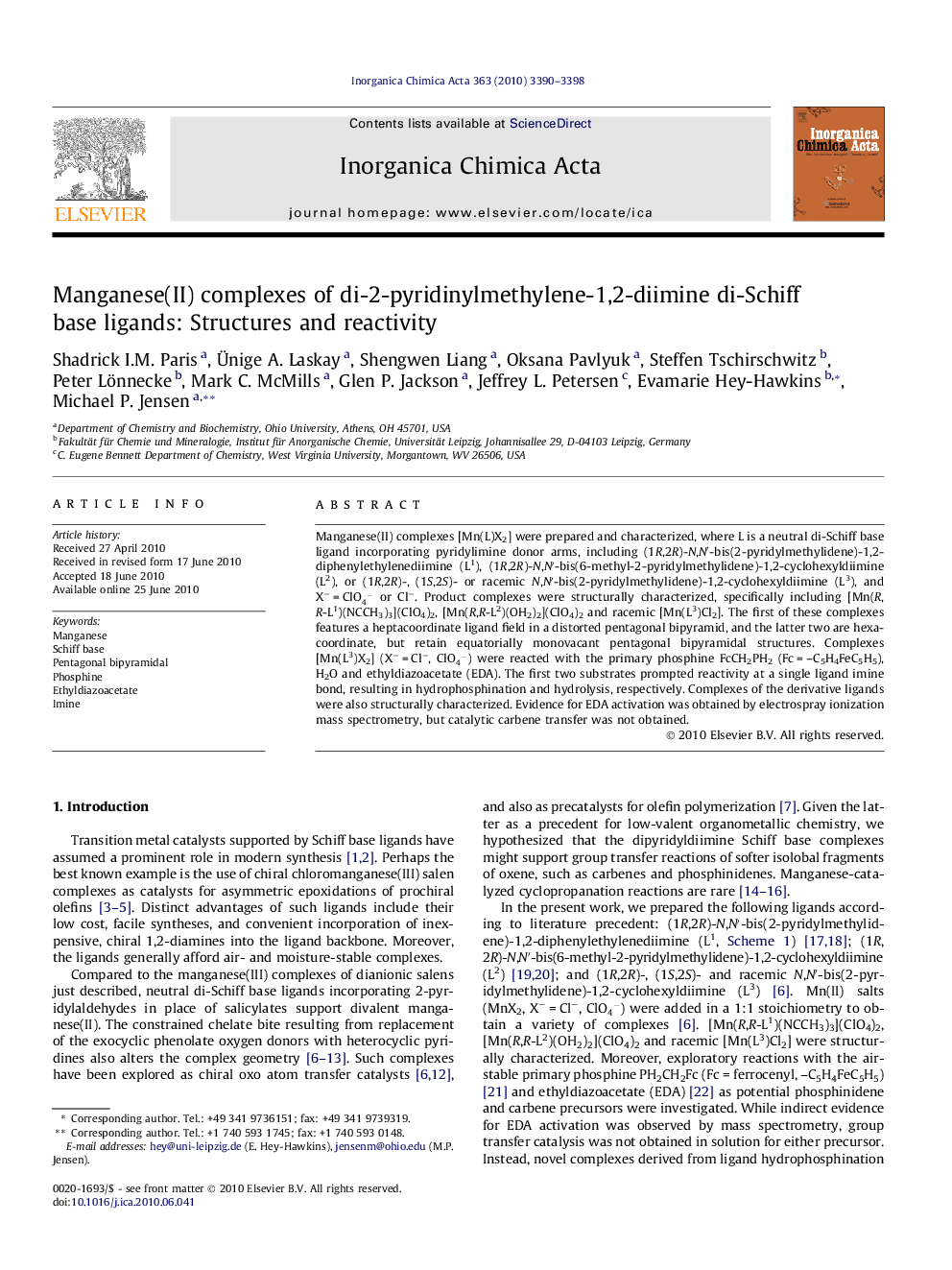| Article ID | Journal | Published Year | Pages | File Type |
|---|---|---|---|---|
| 1311185 | Inorganica Chimica Acta | 2010 | 9 Pages |
Manganese(II) complexes [Mn(L)X2] were prepared and characterized, where L is a neutral di-Schiff base ligand incorporating pyridylimine donor arms, including (1R,2R)-N,N′-bis(2-pyridylmethylidene)-1,2-diphenylethylenediimine (L1), (1R,2R)-N,N′-bis(6-methyl-2-pyridylmethylidene)-1,2-cyclohexyldiimine (L2), or (1R,2R)-, (1S,2S)- or racemic N,N′-bis(2-pyridylmethylidene)-1,2-cyclohexyldiimine (L3), and X− = ClO4- or Cl−. Product complexes were structurally characterized, specifically including [Mn(R,R-L1)(NCCH3)3](ClO4)2, [Mn(R,R-L2)(OH2)2](ClO4)2 and racemic [Mn(L3)Cl2]. The first of these complexes features a heptacoordinate ligand field in a distorted pentagonal bipyramid, and the latter two are hexacoordinate, but retain equatorially monovacant pentagonal bipyramidal structures. Complexes [Mn(L3)X2] (X− = Cl−, ClO4-) were reacted with the primary phosphine FcCH2PH2 (Fc = –C5H4FeC5H5), H2O and ethyldiazoacetate (EDA). The first two substrates prompted reactivity at a single ligand imine bond, resulting in hydrophosphination and hydrolysis, respectively. Complexes of the derivative ligands were also structurally characterized. Evidence for EDA activation was obtained by electrospray ionization mass spectrometry, but catalytic carbene transfer was not obtained.
Graphical abstractComplexes [Mn(L)X2] (L is a tetradentate di-Schiff base ligand; X− = Cl−, ClO4-) were prepared and reacted with a primary phosphine or H2O, resulting in imine bond hydrophosphination and hydrolysis, respectively. Reaction with ethyldiazoacetate was also examined. Novel hepta-, hexa- and penta-coordinate Mn(II) complexes were obtained and structurally characterized.Figure optionsDownload full-size imageDownload as PowerPoint slide
